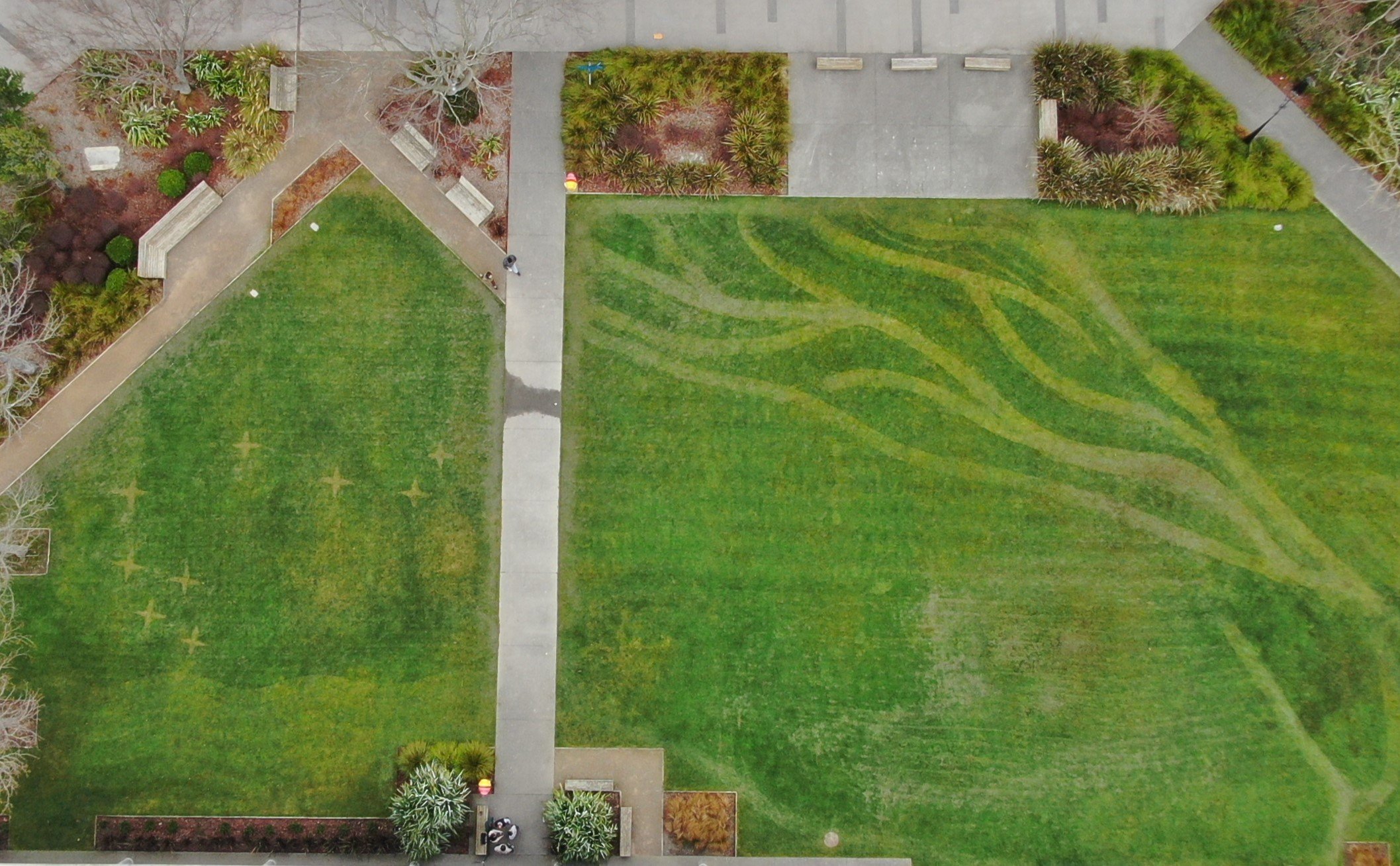2024 Matariki etched into the heart of Ara campuses
02 July, 2024
Lawn art at City and Trades campus among the events celebrating Māori New Year.

New beginnings, heartfelt farewells, setting intentions and giving thanks – the key themes of the nine whetū (stars) of Matariki are being celebrated at Ara Institute of Canterbury.
A sure sign of the importance of the season are the artworks representing the star-cluster which have been worked into green spaces at both the City and Woolston Trades campuses.
It’s the latest lawn-art creation of Ara grounds person Ken Jackson who was quick to acknowledge the guidance of kaumatua Harry Westrupp and the help of Trades tutor Fred Trotman in getting the project off (or perhaps on) the ground. He said consulting with matua Harry had ensured the design was appropriate.
“It truly has been a collaboration. On the smaller city lawn, we have the Matariki stars represented bordered by the sky and a representation if the ocean.”
“On the larger space we have we have the maunga or the mountains in Canterbuy and coming from them is a representation of our beautiful braided river the Waimakariri. There are also striped lines prepresenting the Canterbury Plains.”
“Over at Woolston campus Fred Trotman has been behind the stars represented on the grounds there too.”
Describing Ken Jackson as an “expert whenua curator”, Te Puna Wānaka manager Stanley Tawa thanked him for the work he had done and said the design “literally brings out what Matariki is about”.
“It is about the acknowledgement of the season we are coming into. It’s about new beginnings, but it also recognises that the land has to rest in order for it to flourish,” Tawa said.
Visible to the naked eye from most parts of the planet, the Matariki cluster is widely known in English speaking countries as Pleiades. For Māori, the rising of Matariki signals Te Mātahi o Te Tau, the Māori New Year and its appearance in the morning sky is a sign for people to gather, honour the dead, celebrate the present and plan for the future.
Each of the whetū in the cluster have their own name and are defined with a purpose.
The first two, Matariki and Pōhutakawa, are respectively associated with health and wellbeing and loss.
“Then we have Tupuānuku representing the food grown in the ground – so the the land and the harvest that comes form the land,” Tawa explained in a video produced by Ara to share during the festivities.
“Tupuārangi speaks to the fruits that bud and new growth that comes forth from the heavens – so the fruiting of the trees and the flocking of the manu (birds) and how they fatten,” he said.
“Waitī and Waitā are the stars that represent the waters - both the fresh rivers and the moana or the oceans. Then we have Waipuna-ā-rangi which represents the springs from the heavens or the rain which comes forth to assist cultivation, enabling things to grow.”
“And the winds are represented in the star Ururangi. The winds which carry forth the seed across the land for the crops and new growth.”
The events planned at Ara certainly seek to connect kaimahi and ākonga to the significance of the last star in the cluster, Hiwa-i-te-rangi, which represents the promise of a prosperous season ahead. Also known as the wishing star, Māori traditionally use this star to set their hopes or resolutions for the year.
With workshops, peformances, Rongoā wellbeing treatments, star gazing, tree-planting at the Kaiapoi pā and various other events across campuses – Matariki 2024 is visible and central at Ara.
Mānawatia a Matariki!